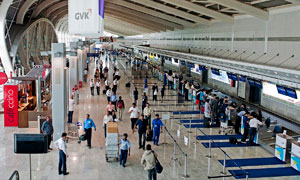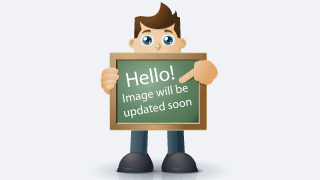DMIC Project - Crucial link to India's economic resurgence
- 6th Apr 2015
- 5272
- 0

Envisaging a mammoth investment estimated at approx US$100bn, the proposed Delhi-Mumbai Industrial Corridor (DMIC), is a mega-infrastructure project which on completion is expected to provide a crucial connect between New Delhi, the political capital of the country and Mumbai, the country’s financial nerve-center.
Some of the other key objectives of this mega project include increasing the share of manufacturing in the overall GDP of the country and to develop self-sustainable, smart cities, logistics hubs and residential townships along the corridor, wherein every city will have world-class infrastructure facilities.
Initial plans include the development of twenty-four such ‘manufacturing cities’. The first phase of the project will witness seven cities being developed by 2019 – one each in UP, Haryana, Rajasthan, MP and Gujarat and two in Maharashtra, providing global and domestic investors with a choice of investment opportunities.
Covering a distance of 1,483kms, the DMIC project is slated pass through six states namely, UP, NCR (Delhi), Haryana, Rajasthan, Gujarat and Maharashtra and will include end terminals located at NCR’s Dadri and JNPT (Mumbai).
Rajasthan with 39 percent and Gujarat with 38 percent will host about 77 percent of the proposed freight corridor, with Maharashtra and Haryana accounting for about 10 percent while UP and NCR getting a 1.5 percent share of its total length.
De-coding the DMIC: Running almost parallel to the Delhi-Mumbai leg of the Golden Quadrilateral National Highway, the freight corridor will provide the much-needed high-speed connectivity for high-axel load wagons of double stacked container trains pulled by high-powered locomotives. As per project plans, the corridor will be supported by state-of-the-art infra facilities that will include essential support in the form of rail connectivity to ports and uninterrupted power supply.
Running almost parallel to the Delhi-Mumbai leg of the Golden Quadrilateral National Highway, the freight corridor will provide the much-needed high-speed connectivity for high-axel load wagons of double stacked container trains pulled by high-powered locomotives. As per project plans, the corridor will be supported by state-of-the-art infra facilities that will include essential support in the form of rail connectivity to ports and uninterrupted power supply.  Set to provide a much-needed boost to the Indian economy, besides enhancing connectivity between New Delhi and Mumbai, the corridor includes several initiatives like the development of nine mega industrial zones, each measuring approx 200-250 sq.km, three ports, six airports, high-speed freight lines, a 4,000 MW power plant and a six-lane high-speed expressway connecting the two cities. Given its mega size, about 180mn people are likely to be affected by the development of this crucial project.
Set to provide a much-needed boost to the Indian economy, besides enhancing connectivity between New Delhi and Mumbai, the corridor includes several initiatives like the development of nine mega industrial zones, each measuring approx 200-250 sq.km, three ports, six airports, high-speed freight lines, a 4,000 MW power plant and a six-lane high-speed expressway connecting the two cities. Given its mega size, about 180mn people are likely to be affected by the development of this crucial project.
Also on the anvil are several other initiatives designed to attract foreign investment into the country that include the development industrial hubs supported by modern infrastructure facilities and numerous exclusive industrial zones and estates along the route. The project will be bankrolled with funds from various sources that include: the Indian government, investments from Japanese firms, Japan depository receipts (issued by Indian firms) and loans from Japanese agencies.
Project Roadmap:
Projected as a global role model for industrial corridors focused on expanding the manufacturing and services platform, the government is optimistic that this project will help create world-class social and civil infrastructure and trigger the fast economic growth of this region.
As per existing plans, the project will include nine junctions to facilitate the exchange of traffic at existing rail stations. A list that includes:
Vasai Road: For traffic to & from Mumbai, excluding the JNPT.
Gothangam: For traffic to & from Hazira complex, Jalgaon-Udhna.
Makarpura (Baroda): For traffic to & from Baroda, Ahmedabad and along the Baroda-Godhra route.
Amli Road (Sabarmati): For traffic to & from ICD-Sabarmati and along the Viramgam-Sabarmati Route, Ahmedabad, Rajkot and Bhavnagar divisions of the Western Railway.
Palanpur: For traffic to & from ports like Kandla and Mundra in addition to the Gandhidham area.
Marwar Junction: For traffic from & to the Jodhpur area.
Phulera: For traffic to & from the Jaipur-Tundla, Jaipur-Sawai Madhopur routes.
Rewari: For traffic to & from the Rewari-Hissar-Ludhiana-Bathinda routes.
Pirthala (Tughlakabad): For traffic to & from the Tughlakabad belt.
Goldmine for Investment: Its goes without saying that a project this size, showcasing a exclusive industrial corridor between two of the country’s most important cities, backed by adequate infrastructure support, presents a lucrative investment opportunity at the very least.
Its goes without saying that a project this size, showcasing a exclusive industrial corridor between two of the country’s most important cities, backed by adequate infrastructure support, presents a lucrative investment opportunity at the very least.
With high-speed connectivity being the main driver, a 150km area has been chosen on both sides of the corridor to be developed as the DMIC suitably supported by rail and road connectivity to key markets and select ports on the West coast.
In order to drive investments in this region, several high impact nodes, integrated investment regions and industrial areas have further been identified inside the corridor to provide investment-friendly facilities.
These self-sustained townships will be provided with a network of support services which will include: road and rail connectivity to enable freight movement, quality social infra, reliable power systems, domestic and international air connectivity and other world-class facilities to ensure the foundation of a globally competitive business environment here.
An Investment Region (IR) would be a specifically de-lineated industrial region with a minimum spread of over200 sq.kms, while an Industrial Area (IA) would feature a minimum area of 100 sq.km. Twenty-four such nodes have already been identified that include 15 IAs and 9 IRs across six states. As per plans, 6 IR and 6 IAs will be implemented in the First Phase during 2008-2012 with the balance being spread over the next 4 years.
Nodes identified for Phase-1 include:
Investment Regions (IRs):
Dadri-Noida - Ghaziabad investment region (UP) for investments into general manufacturing.
Manesar-Bawal investment region (Haryana) for investments into auto component and automobile investments.
Khushkhera-Bhiwadi-Neemrana investment region (Rajasthan) for investments spanning general manufacturing, automobile, auto components.
Bharuch-Dahej investment region (Gujarat) for investments into petroleum, chemical and petro-chemicals.
Igatpuri-Nashik-Sinnar Investment Region (Maharashtra) as a hub for investments for general manufacturing activities.
Industrial Areas (IAs):
• Meerut-Muzaffarnagar industrial area (UP): Engineering, Manufacturing.
• Faridabad-Palwal industrial area (Haryana): Engineering, Manufacturing.
• Jaipur-Dausa industrial area (Rajasthan): Marble, Leather, Textile.
• Neemuch-Nayagaon industrial area (MP).
• Industrial area with Greenfield Port at Alewadi/ Dighi in Maharashtra.
Project Implementation:
The execution of the project will be controlled by a four-tier system, helmed by an Apex body chaired by the Finance Minister, with relevant Ministers and the CMs of the participating six states forming the advisory panel.
To ensure the smooth implementation of this prestigious project a special corporate entity - Delhi Mumbai Industrial Corridor Development Corporation (DMICDC) – will be created to supervise key tasks related to finance, implementation, and project development. The autonomous corporation will include shareholding of the Government of India through Department of Industrial Policy & Promotion (DIPP) (49%), Japan Bank for International Cooperation (JBIC) (26%) and Public Financial Institutions (HUDCO -19.9%, IIFCL -4.1% and LIC – 1%).
It will be headed by a fulltime CMD and will include representatives from the Union government, state governments and FIIs. Also on the agenda is the creation of a state-level agency which will be tasked with coordination between the DMICDC and other relevant state government agencies, in addition to project implementation agencies and SPVs.
The DMIC project is likely to be implemented in two phase, at an estimated US$100bn cost for building the infrastructure in the first phase. Japanese companies are expected to invest about US$10bn in the proposed corridor during the first phase.
Featured in KPMG’s “100 Most Innovative Global Projects” and rated as one of the world’s most innovative and inspiring infrastructure projects, this proposed industrial corridor is expected to attract ample foreign investment , provide an impetus for local talent, encourage real estate development and showcase a viable example of sustainable development.



Comments
Add Your Comment
Thank you, for commenting !!
Your comment is under moderation...
Keep reading other articles